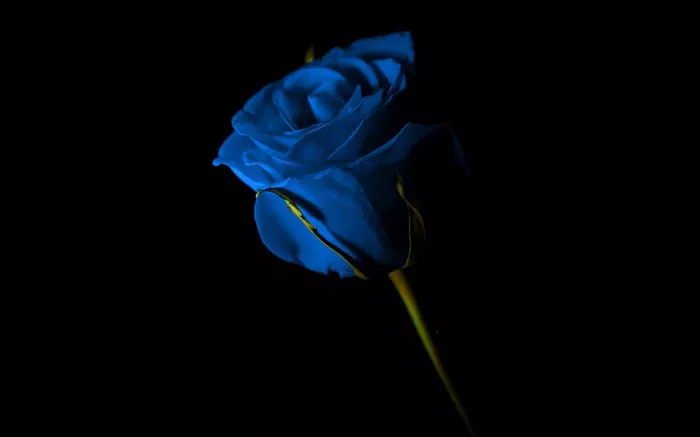In the realm of flora, blue flowers are a rarity, often capturing the imagination with their elusive beauty and enchanting hues. While blue flowers are relatively uncommon in nature, some species stand out for their exceptional rarity, captivating botanists, horticulturists, and flower enthusiasts alike. In this article, we delve into the world of botanical treasures to uncover the six rarest blue flowers, each a testament to nature’s artistry and complexity.
1. Himalayan Blue Poppy (Meconopsis grandis)
The Himalayan Blue Poppy, with its striking azure petals, is a legendary botanical marvel and one of the rarest blue flowers in the world. Native to the Himalayan region, particularly found in Bhutan, Nepal, and Tibet, this delicate flower thrives in cool, moist climates at high altitudes. Its elusive nature and challenging cultivation requirements contribute to its scarcity, making encounters with this ethereal bloom a cherished experience for botanical enthusiasts.
Despite its captivating beauty, cultivating the Himalayan Blue Poppy presents numerous challenges, including specific soil conditions, moisture levels, and temperature requirements. Additionally, its short blooming period adds to its mystique, as it graces the landscape with its celestial blue petals for only a brief moment each year.
2. Blue Puya (Puya berteroniana)
Native to the arid landscapes of Chile, the Blue Puya is a rare and captivating member of the Bromeliaceae family. Known for its distinctive steel-blue foliage and towering flower spikes adorned with azure blooms, this striking plant adds a touch of exotic elegance to its surroundings. However, its rarity stems not only from its captivating appearance but also from its specialized habitat requirements and slow growth rate.
In its natural habitat, the Blue Puya thrives in rocky, well-draining soils and requires ample sunlight to flourish. Despite its resilience to drought and harsh conditions, human encroachment and habitat loss pose significant threats to its survival in the wild. As a result, conservation efforts are underway to protect this iconic species and ensure its continued existence for future generations to admire.
3. Blue Jade Vine (Strongylodon macrobotrys)
Renowned for its mesmerizing turquoise flowers resembling delicate butterfly wings, the Blue Jade Vine is a rare gem native to the tropical forests of the Philippines. As a member of the pea family (Fabaceae), this vine produces cascading clusters of vivid blue flowers, creating a spectacle of color that is unrivaled in the botanical world.
Despite its breathtaking beauty, the Blue Jade Vine is a challenging plant to cultivate outside its native habitat, requiring specific climatic conditions and ample space to flourish. Furthermore, its slow growth rate and limited availability contribute to its status as one of the rarest blue flowers sought after by collectors and enthusiasts worldwide.
4. Blue Poppy of Afghanistan (Papaver somniferum subsp. afghanicum)
The Blue Poppy of Afghanistan is a captivating wildflower that thrives in the rugged terrain of the Hindu Kush mountains. Known for its enchanting sky-blue petals and contrasting yellow stamens, this ephemeral bloom adds a touch of vibrancy to the alpine meadows where it grows. However, its rarity and restricted distribution make it a coveted find for botanical explorers and researchers.
In addition to its ornamental value, the Blue Poppy of Afghanistan holds cultural significance in the region, where it has been used for centuries in traditional medicine and rituals. Despite conservation efforts aimed at protecting its natural habitat, threats such as habitat degradation and overharvesting continue to endanger this iconic species, highlighting the importance of sustainable conservation practices.
5. Blue Jacaranda (Jacaranda caerulea)
Native to the subtropical regions of South America, the Blue Jacaranda is a majestic tree known for its stunning blue-violet flowers that blanket the canopy in a sea of color. Despite its widespread popularity in ornamental horticulture, true blue-flowering varieties are exceptionally rare, adding to the allure of this iconic species.
In addition to its aesthetic appeal, the Blue Jacaranda plays a vital ecological role as a pollinator attractant and habitat provider for various bird and insect species. However, habitat loss and urbanization pose significant threats to its survival in the wild, underscoring the importance of conservation efforts to preserve this botanical treasure for future generations to enjoy.
6. Blue Dahlia (Dahlia spp.)
Dahlias are renowned for their diverse array of colors and forms, but blue-flowering varieties are particularly rare and coveted among enthusiasts. While true blue dahlias are a product of selective breeding and hybridization, their elusive beauty continues to captivate gardeners and flower aficionados worldwide.
Despite their popularity in horticulture, blue dahlias require careful cultivation and precise growing conditions to achieve their vibrant hue. Additionally, their susceptibility to pests and diseases adds to the challenge of maintaining these prized blooms. Nevertheless, their unparalleled beauty and rarity make them a sought-after addition to gardens and floral arrangements, embodying the magic and allure of blue flowers in the botanical world.
Conclusion
In conclusion, the six rarest blue flowers discussed in this article represent some of nature’s most exquisite creations, each possessing its own unique charm and allure. From the towering peaks of the Himalayas to the tropical forests of the Philippines, these botanical treasures continue to inspire awe and fascination, reminding us of the beauty and diversity of the natural world. As stewards of the environment, it is our responsibility to protect and preserve these rare and endangered species for future generations to cherish and admire.


